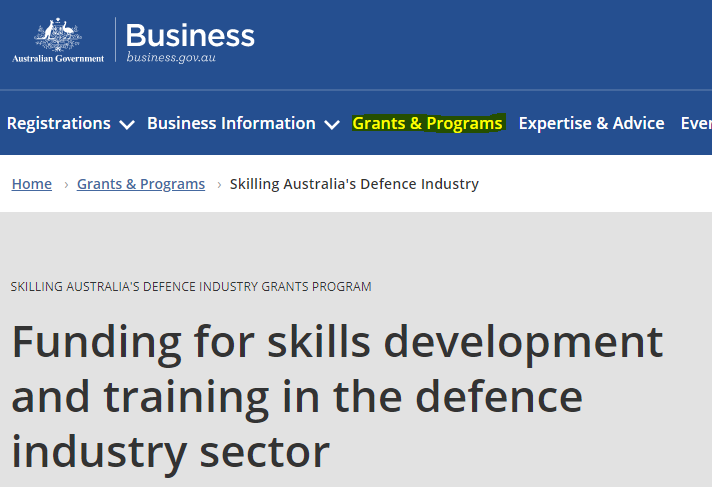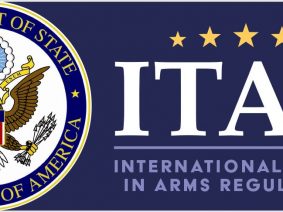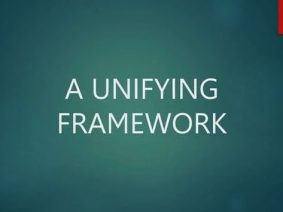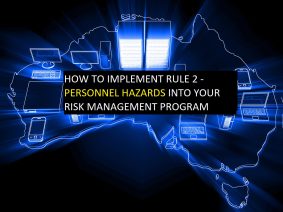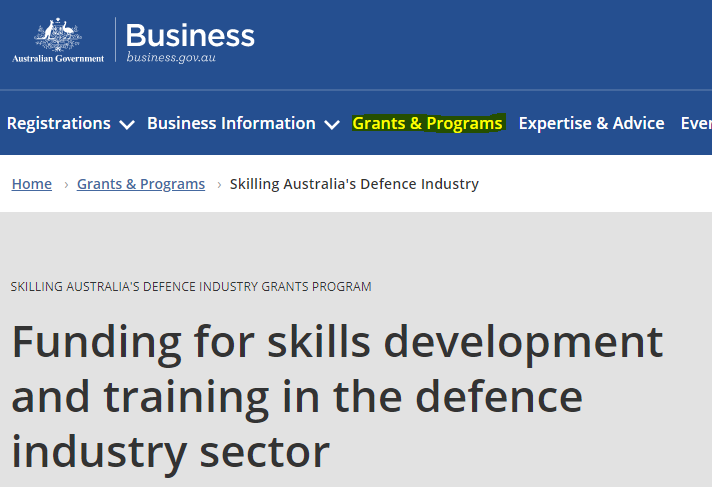
The Skilling Australia’s Defence Industry Grants Program will provide you up to $500,000 over three years to help develop and enhance your defence sector skills and human resources practices and training plans. This is aimed at reducing the personnel security barriers you face and can help you establish enhanced human resources practices and training plans (security-awareness) that will build lifelong learning activities into your business.
We are ready to assist you. Are you ready?
We are ready, willing and able to be your external provider to assist you by positioning your company as a Trusted Partner with a Trusted Workforce by assuring the suitability of your workers, contractors and the like and include an optional security awareness training mini-course.
Who are we? Crown Vetting is a high-end background screening organisation and a national security clearance provider to the Commonwealth since the AGSVA was created 2010. It’s sister company Cleard Life Vetting Agency (CLVA) has democratised vetting via the first commercial vetting-as-a-service digital platform. It’s proprietary, automated screening interview, AI-powered analysis and reporting tool delivers faster, cheaper, smarter, fairer, better suitability assessments to all DISP members.
We know that a CLVA Trusted Workforce Project (for companies that do and don’t have security cleared requirements) will remarkedly improve the capacity and capability of your business to service the defence industry sector. In the next few minutes, using the grant questionnaire template as the guide, we will show you how the impact of grant funding of up to $500,000 can transform your business standing.
We welcome a discussion to assist you further.
E.2 Project title and description
Project title:
Trusted Workforce: Personnel Suitability Assessments & Security Awareness
Provide a brief project description for publication.
We will establish an enhanced (HRT) human resource practice using the PSPF to deter and detect malicious trusted insider threats. We will use that opportunity to also enhance our training plan to brief our people on the top five cyber security challenges, using security cleared experts, in a one-on-one, hyper-concentrated mini-course environment (MCC). Having trusted and vetted staff will help us to comply with the PSPF and the ISM. Pre-vetting staff allows us to make better informed decisions about who to put through the AGSVA security clearance process, which in turn speeds up AGSVA processing times. It improves our capability to serve the defence industry sector and positions us and readies us to be a trusted third-party partner.
E. 3 Primary capability stream
- Cyber
- Select the secondary capability: Other
E.4 Detailed project description and key activities
Overview: 1 in 4 data breaches are caused by malicious employees (not accidental fat finger or clicking on a bad link). The ISM Principle 10 states that only “Trusted and Vetted” personnel can have access to our company’s and supply chain customer systems. This has national security implications that cannot be left to security designated positions or AGSVA’s national security clearance processes or even Australian Standards 4811 Employee Screening.
HRT: It is important to know and understand that our own personnel’s background is not filled with unmitigated risk, therefore we will establish an enhanced (HRT) human resource practice using the PSPF12 to deter, detect, predict and anticipate trusted insider hostile acts. We will source a high-end background checking organisation who is a national security clearance provider to conduct one-on-one background screening interviews with our personnel covering areas such as criminal history, illegal drug use, financial stress, adverse work behaviour, security breaches, foreign influence and coercion and more. Just as there is four AGSVA levels, the vetting company mimics the four levels so that we can vet each person in our company appropriately. For example, at recruitment, we select the CL0-Basic Assessment (entry level, Baseline equivalent) either for the ‘top three’ candidates or the one we aim to offer the job to. As workforce planning changes, or new contract opportunities arise, there might be official NV1 or NV2 or PV security-designated positions that might need to be filled. Using the CL1, CL2, CL3 suitability assessments means that we can have the right people at the right time move into the right position. We might also insist as part of our due diligence that our potential vendors are also suitability screened, which assures the trustworthiness of the partnership.
MCC: New or existing employees might not fully understand or comprehend our security posture and culture. That’s where the security & cyber awareness training (CACAT) micro-credential course (MCC) comes in. After the (HRT) suitability interview is complete, qualified and security cleared vetting officers will spend one-on-one time with each candidate discussing key fundamental elements of information security and cyber security and how they can help to keep their existing or future employer safe. The vetting officer quickly gauges the candidate’s prior knowledge of security concepts and then tests & calibrates their knowledge relating to five essential themes. This helps candidates understand the security environment that they are walking into and also helps us to comply with and make in-house induction and on-boarding faster and more effective. The vetting agency confirms with us at the time of the suitability result that the cyber awareness and security awareness training has been completed. The five topics are (1.) Understanding & applying the need-to-know principle. (2). Suspicious contacts. (3). Locking your computer. (4). Socially engineered emails. (5). Close of business checks.
E.5 Project outcomes
(1) A Trusted Workforce. Most personnel strive to conduct themselves in an ethical and professional manner. However, it would be negligent to ignore the risk of someone deliberately causing harm or exploiting their positions of trust. The ‘trusted insider’ represents a real and enduring risk to everyday business practices. It is an important risk consideration for both Defence and the defence industry member. Insider activity is at the very least embarrassing and damaging to an organisation’s reputation, but it can also be disruptive, expensive and life threatening.
(2) A Vetted Workforce. Personnel screening isn’t just about weeding out untrustworthy individuals or high-risk workers or to reduce the likelihood of counter-productive workplace behaviours from manifesting. For both employee and employer, the goal of pre employment screening is to find a good match for both parties in order to ensure a positive, productive working relationship for everyone. With the right pre-employment screening solution in place, we can set the foundation for long-term success – for both us and our staff. We also reduce the security clearance barrier of ‘doubt and delay’ by ‘pre-vetting’ clearance subjects with a PSPF-compliant suitability clearance using AGSVA-experienced vetting officers.
(3) A Security-Aware Workforce. We will help candidates understand the security environment that they are walking into and also help us comply with and make our in-house induction and on-boarding a breeze. Develop cyber hygiene skills is vitally important at every step. Training and character will impress and reinforce the security-aware and cyber-aware culture of our company.
(4) A Higher Quality Workforce. A Glassdoor survey reports that businesses that take the time to invest in an enhanced candidate screening processes will improve the quality of their hires by 70%. With 1 in 50 employees under the effect of the illegal drug ICE and 1 in 36 using marijuana regularly, we cannot afford the risk of losing a major Defence or Defence Industry contract because we didn’t ask the right questions of our staff or not enforce zero-tolerance policies. Although at this stage, our organisation may not require our people to ‘pee-in-a-cup’, it would be negligent in our day and age to not even check. Having someone in our organisation making decisions under the influence can be damaging in so many ways.
(5) A Reduction in Third Party Supply Chain People Risks. Like many businesses, we are looking for long-term relationships with like-minded companies. Trust is key. What lies beneath each person’s profile, proposal or CV needs to be a cleared life. It is not easy to gain their trust and secure a long-term contract without it. We have pre-determined that partners want, demand and require demonstratable enhanced personnel security measures to be in place so that our company can start and continue to do business with them. Likewise, we want our suppliers and supply-chain to be empowered to do this also. Verified and proven trust reduces ‘people risk’ considerably. The outcome is to present and position ourselves as a Trusted Third-Party Partner.
E.6 Project Duration
- HRT: Existing Workforce (Timeframe: 0-3 months)
- HRT: Existing Workforce Internal Transfers (Timeframe: Month 3 to Month 24)
- HRT: New Employees + MCC (Timeframe: Month 3 to Month 24)
- HRT: New Contractors + MCC (Timeframe: Month 6 to Month 24)
- HRT: New Suppliers + MCC (Timeframe: Month 9 to Month 24)
E.7 Project Milestones
- Milestone titles
- HRT: Existing Workforce: Secured
- HRT: Existing Workforce – Internal Transfers: Secured
- HRT: New Employees + MCC: Secured
- HRT: New Contractors + MCC: Secured
- HRT: New Suppliers + MCC: Secured
- Milestone Descriptions
- HRT: Existing Workforce. For all non-security cleared personnel, we will arrange for employees (and contractors) to undergo the HRT-CL0
- HRT: Existing Workforce – Internal Transfers – For all personnel who have been identified as requiring a NV1, NV2 or PV clearance, these people will undergo the appropriate suitability assessment HRT-CL1, HRT-CL2 or HRT-CL3.
- HRT: New Employees + MCC. For all shortlisted candidates (or the one identified and ready to offer the position to), undergoes the HRT-CL0 + MCC-CASAT
- HRT: New Contractors + MCC. All contractors undergo the HRT-CL0 + MCC-CASAT as part of the contractual obligation
- HRT: New Suppliers + MCC. All shortlisted vendors/suppliers key personnel (or all relevant personnel) undergo HRT-CL0 + MCC-CASAT
- Code: HRT-CL0 “CL0: Basic Assessment” – a Baseline-equivalent
- Code: HRT-CL1 “CL1: Standard Assessment” – an NV1- equivalent
- Code: HRT-CL2 “CL2: Premium Assessment” – an NV2- equivalent
- Code: HRT-CL3 “CL3: Ultimate Assessment” – A PV- equivalent
- Code: MCC-CASAT: Cyber Awareness and Security Awareness Training
- Estimated start date
- HRT: Existing Workforce (Timeframe: Month 0-3)
- HRT: Existing Workforce Internal Transfers (Timeframe: Month 3 to Month 24)
- HRT: New Employees + MCC (Timeframe: Month 3 to Month 24)
- HRT: New Contractors + MCC (Timeframe: Month 6 to Month 24)
- HRT: New Suppliers + MCC (Timeframe: Month 9 to Month 24)
- Estimated end date
HRT: Existing Workforce: Month 3
HRT: Existing Workforce Internal Transfers: Month 24
HRT: New Employees + MCC: Month 24
HRT: New Contractors + MCC: Month 24
HRT: New Suppliers + MCC: Month 24
- Estimate Cost (+gst)
- Code: HRT-CL0 $169 per assessment
- Code: HRT-CL1 $295 per assessment
- Code: HRT-CL2 $875 per assessment
- Code: HRT-CL3 $1575 per assessment (Video Teleconference)
- Code: MCC-CASAT $65 each
F. Project Activities
Our Trusted Workforce Project will improve the capacity and capability of our business to service the defence industry sector by maturing our personnel security compliance measures – notably ISM P10 and ISM Security Control 0434. Having PSPF12 compliant Trusted and Vetted personnel is the enabler for all that we do in Defence.
Our Trusted Workforce Project augments our existing internal human resources practices and the external security awareness training plan will build lifelong learning activities of reinforcing that values such as integrity and character count and that security awareness is front and centre when supplying to the defence sector.
The ANAO Audit of the national security clearance process indicates that complex cases on average 144 days (Baseline), 640 days (NV1), 697 days (NV2) and 792 days (PV). Therefore, our ability to reduce the doubt and delay of the official security clearance process makes our HR process more streamlined, more harmonised – in short: faster, better and nimbler.
Select the upskilling area provided by the course: Facilitation and workforce planning
Select the upskilling area provided by the MCC course: employee training and development facilitation.
Conclusion:
Note that the article/submission has been written in such a way that you can cut & paste it and modify it as required into your own application.
We are here to help you accomplish your goals.
Call us 02-6171-4171 or sales@cleard.life
Sources:
https://www.business.gov.au/Grants-and-Programs/Skilling-Australias-Defence-Industry
